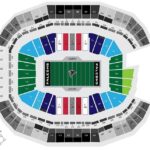Mercedes-Benz, a name synonymous with luxury, performance, and automotive innovation, is a brand recognized globally. But behind this iconic marque stands a corporate structure that has evolved over decades. Understanding who owns Mercedes-Benz today requires a journey through mergers, spin-offs, and strategic realignments within the automotive industry. This article will clarify the current ownership of Mercedes-Benz, tracing its lineage back to its origins and explaining the modern corporate landscape.
To truly understand the ownership of Mercedes-Benz, we need to start with its historical roots. The story begins with two pioneering inventors, Karl Benz and Gottlieb Daimler, working independently in the late 19th century. Benz created the Benz Patent-Motorwagen, widely considered the first practical automobile, while Daimler, along with Wilhelm Maybach, developed high-speed gasoline engines that powered early Daimler automobiles. These two companies, Benz & Cie. and Daimler-Motoren-Gesellschaft (DMG), were initially competitors but eventually merged in 1926 to form Daimler-Benz. This merger was a pivotal moment, creating a powerhouse in the automotive world and giving birth to the Mercedes-Benz brand.
For much of the 20th century, Daimler-Benz AG operated as a unified entity, producing Mercedes-Benz vehicles along with other products and services. However, as the global economy shifted and corporate strategies evolved, Daimler-Benz underwent significant transformations. In 1998, Daimler-Benz merged with the American automotive giant Chrysler Corporation, creating DaimlerChrysler AG. This merger was intended to create synergies and efficiencies, but the cultures and business models of the two companies proved difficult to integrate effectively.
After nearly a decade of challenges, DaimlerChrysler decided to part ways. In 2007, Chrysler was sold, and DaimlerChrysler AG was renamed Daimler AG. Under Daimler AG, Mercedes-Benz remained the core luxury car division. Daimler AG operated with various divisions, including Mercedes-Benz Cars & Vans, Daimler Trucks & Buses, and Daimler Mobility. This structure aimed to provide more focus and agility to each business unit while still operating under the umbrella of Daimler AG.
However, the evolution didn’t stop there. In a significant strategic move to further enhance focus and unlock value, Daimler AG underwent another major restructuring. As of February 1, 2022, Daimler AG officially spun off its truck and bus division, which became Daimler Truck Holding AG, a separately listed and independent company. The remaining part of Daimler AG, primarily focused on Mercedes-Benz cars and vans, was renamed Mercedes-Benz Group AG.
Therefore, to answer the question directly: Mercedes-Benz is owned by Mercedes-Benz Group AG. This publicly traded company is headquartered in Stuttgart, Germany, and trades on the Frankfurt Stock Exchange under the ticker symbol MBG. While Mercedes-Benz Group AG is the parent company, the brand “Mercedes-Benz” itself represents a range of luxury vehicles produced by Mercedes-Benz AG, a wholly-owned subsidiary of Mercedes-Benz Group AG.
In conclusion, the ownership of Mercedes-Benz is rooted in a rich history of innovation and strategic corporate evolution. From the pioneering days of Benz and Daimler to the creation of Daimler-Benz, the merger with Chrysler, and the subsequent restructuring into Daimler AG and finally Mercedes-Benz Group AG, the ownership structure has adapted to the changing global landscape. Today, Mercedes-Benz is proudly part of the Mercedes-Benz Group AG, continuing its legacy as a leader in the luxury automotive world.
